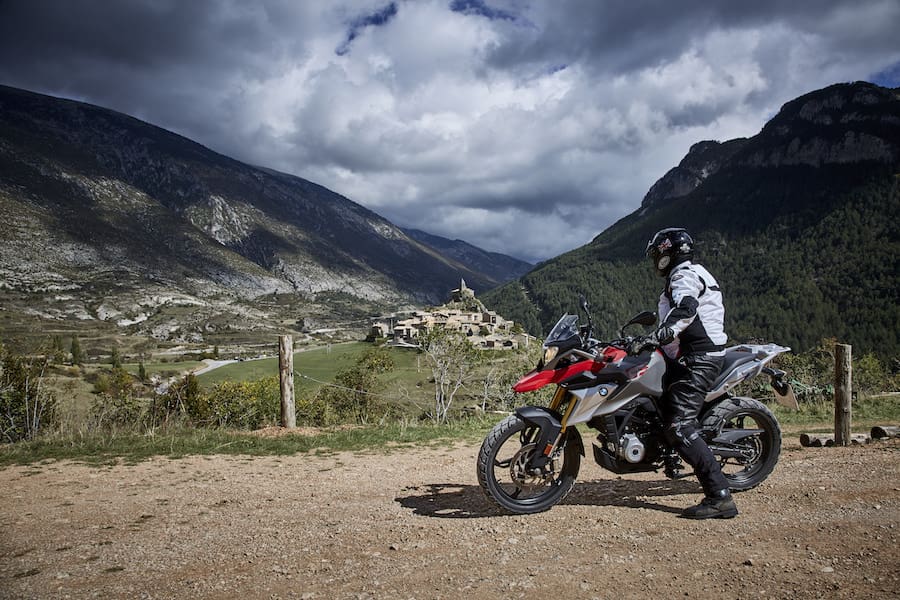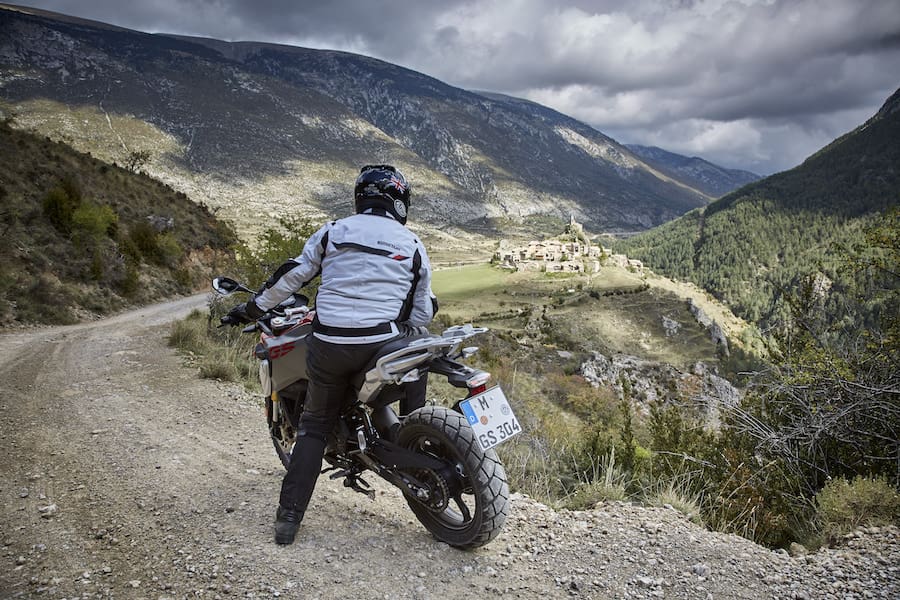The G310R represented the first fruits of BMW’s 2013 partnership with TVS, which manufactures the bikes in India at its factory near Bangalore. Next up is the GS version, and after debuting at last year’s EICMA Milan Show the BMW G310GS is now in production. BMW conceived and developed this A2 licence adventure bike in Germany but TVS builds it in India. It’s affordable, at least in developed markets, at Euro 5,800 in Germany (compared to Euro 4,750 for the G310R).
BMW management is understandably concerned about devaluing the iconic GS trademark with a badge-engineered 313cc bauble, whose primary merit is that it’s cheap. The R1200GS is the firm’s global best-seller. BMW Motorrad’s Head of Vehicle Design, Edgar Heinrich, said: “Creating a small-capacity GS single that lives up to the brand values is one of the most challenging things we’ve yet had to do.” He spearheaded the design of both the R1150GS and R1200GS, so in creating the new mini-GS based, Edgar clearly had some points of reference to work with…
Riding the result of his team’s efforts in northern Spain for two days, we covered 610km from sea level at Barcelona to more than 2,300m to visit Andorra. We climbed high up in the Pyrenees Mountains to cross into France, then back again to Barça. Bikes with three times the capacity and twice as many cylinders might have struggled. The route also included off-road riding on a bike that has genuine go-anywhere capability so long as it’s got a reasonably hard surface under the Metzeler Tourance tyres that come fitted as standard on the five-spoke cast aluminium wheels.
The mini-GS has exactly the same engine platform as its G310R sister model, with an identical level of tune. It delivers 25kW/34bhp at 9,500 rpm, with a 10,500 rpm limiter, and maximum torque of 28Nm/21ft-lb at 7,500 rpm. A full tank of fuel brings kerb weight to 169.5kg – 11kg more than the R-model roadster. The tubular steel chassis is the same, too, although the GS seems to have a greater sense of substance about it than the R-model. At 835mm high its seat is 50mm taller, thanks partly to the longer-travel suspension, so it’s best to use the footrest to hop aboard easily. There’s a choice of aftermarket seats to lower or lift the riding position, and the 15mm lower one could make the bike more comfortable for shorter riders; women are a key target customer of BMW’s for this new model.

The taller stance, broader, flatter handlebars and the lower-mounted footrests deliver a notably more spacious riding position. I predict this bike will become a favourite with couriers and anyone else who has to ride in cities. Not just because it’s cheap to buy and economical to run; claimed fuel consumption is 3.33 lt/100km (70mpg/US, or 85mpg/UK). The taller stance lets you see ahead over car roofs, so you can plan your route to best advantage. Together with a cleverly designed, well-sculpted dual seat the G310GS proved improbably comfy on an all-day 320km/200mi ride, thanks most of all to the complete absence of vibration from the little dohc four-valve engine thanks to its single gear-driven counterbalancer. There are no vibes at all, not even approaching the 10,500 rpm limiter.
The one downside of the small capacity motor is that you do need to rev it pretty hard to build any kind of speed. That entails using the gearbox quite hard, but it has well-chosen ratios, as well as a clean, precise shift action and a very light clutch. BMW has definitely improved this on the GS compared to the R-bikes I rode last year. The shift action is now Japanese quality. It’s no hardship riding the little BMW in traffic or narrow, densely-packed streets. Work the gearbox hard and use lots of revs to access enticing performance that exceeds expectations, considering how small the engine is. It’s a bike that’ll appeal to riders of all levels of experience and skill, and will make each of them feel good about how they’re riding it.
Although it’s not a slowpoke motor, even if it’s little, gradient as ever is the G310GS’s worst enemy in riding it hard. Not to the point that you’ll need to slip the clutch exiting a tight uphill turn climbing high up in the mountains, but you do need to keep the revs up for a decent drive out of a turn. Otherwise it struggles to build speed. The digital gear counter on the dash is your passport to riding this bike well.
Maintaining hard-earned momentum is relatively simple, since the mini-GS BMW’s handling is pretty good, especially by the standards of its capacity class. Unlike on the R-bike, the front rim is a 19-incher carrying a 110/80 tyre, though the rear’s still a 17-incher with 150/70 rubber. This results in a quite long 1420mm wheelbase for a 313cc single – 46mm longer than the G310R’s. This helps it live up to those GS family genes in making it seem stable and planted on the highway.
This marriage of Eastern manufacture with Western design and build values is an inexpensive, affordable BMW, not a cheap one. Just as with the G310R, there’s an honest sense of manufacturing quality about the mini-GS. There’s refinement in use, too; the engine fuels beautifully, seems strong for its capacity level, and feels essentially unburstable. While keenly priced, it conforms to BMW’s brand identity in terms of performance, manufacturing quality, and styling. Its rivals have all got trouble on their hands

Photo credit: Daniel Kraus











